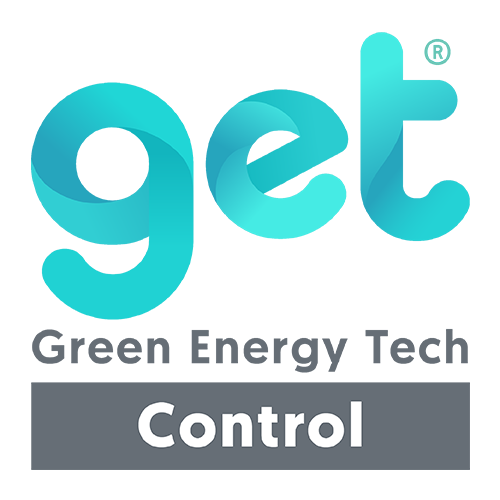Green Energy Tech Control
Key Benefits
Better Comfort and Productivity
Eliminate hot and cold spots with proactive regulation of indoor air temperature
Improve Operational Efficiency
Pre-empt thermal comfort concerns and remotely manage at a micro-zone level through any device, eliminating the need to house data servers and a dedicated response terminal in the building
Energy Savings and Carbon Reduction
Potentially save up to 30% on cooling energy and 18% on carbon emissions; enabling properties to become green buildings
Self-optimising and Predictive Controls
Cloud-based AI enhances autonomous control capabilities by continuously commissioning and learning from the smart building’s energy usage patterns
Efficient Retrofit Installation
Quickly retrofit devices to existing equipment and save up to 25% on man-hours compared to a Variable Air Volume (VAV) system replacement
How it works
Optimisation
Self-learning building intelligence system that optimises and regulates air-conditioning in buildings
Control
Smart damper system divides large open plan office into micro-zones with individual airflow control on each air-conditioning diffuser
Smart
Uses AI and IoT to reduce energy consumption, taking into consideration factors like occupancy and weather conditions to optimise airflow to evenly cool areas - furthering the case for smart buildings
Efficient
Helps save energy, improve operational efficiency and occupant comfort, and can be cost effectively deployed in a minimally invasive and scalable manner

Before implementation: Hot and cold spots in office space

After implementation: Office space is evenly cooled

SP has partnered 75F, a building intelligence solutions provider, to customise and implement this solution for Singapore’s tropical environment.
How to save up to 30% in cooling energy?
Watch our AI-backed microclimate solution in action.
Product Features
Chiller Plant Manager
Simplify the complexities of managing your building's chiller plant.This cutting-edge loT-based system controls plant equipment, energy consumption, and system performance. Its out-of-the-box digital twin of central plant equipment puts continuous plant monitoring at your fingertips.
Integrated Indoor Air Quality Management (IAQ)
Volatile Organic Compounds (VOCs) are emitted as chemical gases into
the air from objects such as building materials, office equipment,
paints, cleaners, and aerosol sprays. VOCs buildup occurs in unused or
partially occupied rooms or spaces. For Carbon Dioxide (CO2), the
opposite is true: high occupancy inside a zone or conference room
without proper ventilation spikes CO2 levels.
Our IAQ
algorithm takes into consideration the target and threshold values of
CO2 and VOCs at the
zone level, to bring in more air when needed.
Dynamic Airflow Balancing
Dynamic Airflow Balancing (DAB) is a proactive zone control system that remotely monitors and controls conditions in individual spaces for optimised comfort and efficiency. Predictive machine learning algorithms optimise temperature capacity by redirecting conditioned air to the spaces that need it most, a strategy which is proven to lower utility consumption.
Dynamic Chilled Water Balancing
An end-to-end solution for your chilled water system to maintain comfort while using less chilled water and saving more energy. The system understands, analyses and optimises the overall performance of your ACMV system, delivering you energy efficiencies.
Outside Air Optimisation
The Outside Air Optimisation (OAO) is an application that combines hardware, software and real-time weather data to provide advanced sequences of operation from rooftop economisers to built-up air handlers in a wide range of commercial buildings. Facility managers who want to maximise efficiency, occupant comfort and indoor air quality (IAQ) should install OAO on all outside air applications. Customers can also add OAO to maintain pressure inside a building.
Thermal Comfort
Having the right temperature can improve employee productivity by up
to 10%. It also keeps everyone healthier, while reducing Air
Conditioning and Mechanical Ventilation (ACMV) system costs and carbon
emissions.
Our solution monitors and controls all factors
that impact thermal comfort, including heat loads, set point of
temperature, airflow and humidity, which are often beyond the
capabilities of legacy control systems.
Epidemic Mode
with Smart Purge™ and Smart Enhanced Ventilation™
Minimises the risk of viral transmission in air-conditioned spaces
Poorly ventilated enclosed spaces carry greater risk of infection from airborne viruses like COVID-19
Can be remotely monitored, managed and controlled without physical presence in the building
Via the Facilisight® dashboard
Updates automatically as and when guidelines change
Compliant with the latest guidelines from the Building and Construction Authority (BCA) and the American Society of Heating, Refrigeration and Air-Conditioning Engineers [ASHRAE]
Find out how you can implement the Epidemic Mode for your workplace

Energy Insights On-the-go
Supporting energy-saving efforts, the GET Control solution comes with Facilisight®, a suite of web and mobile apps to give building operators actionable insights, and real-time monitoring and control of indoor air quality, comfort, acoustics, light and thermal levels.
Testimonial
The Integrated Air Quality Management module further complements GET Control to help building operators monitor the indoor environment quality in a building through sensors and interaction with the occupants. The aim is to drive towards an optimal working environment that positively impacts the health and productivity of occupants and improves the efficiency of a building’s ventilation. Contact Us to find out more.
building intelligence systems



